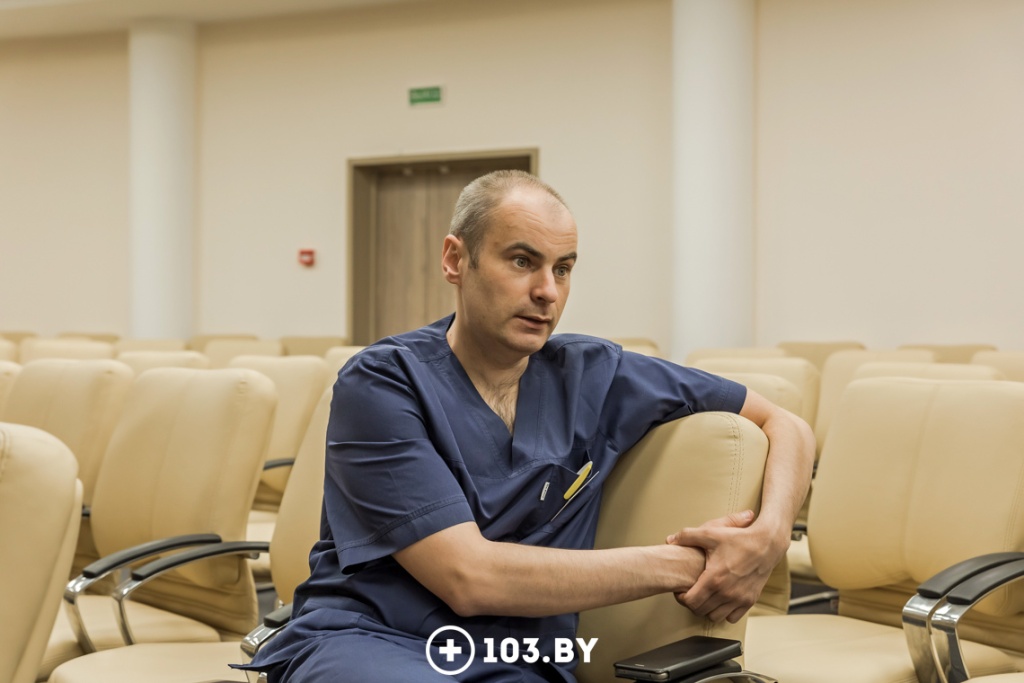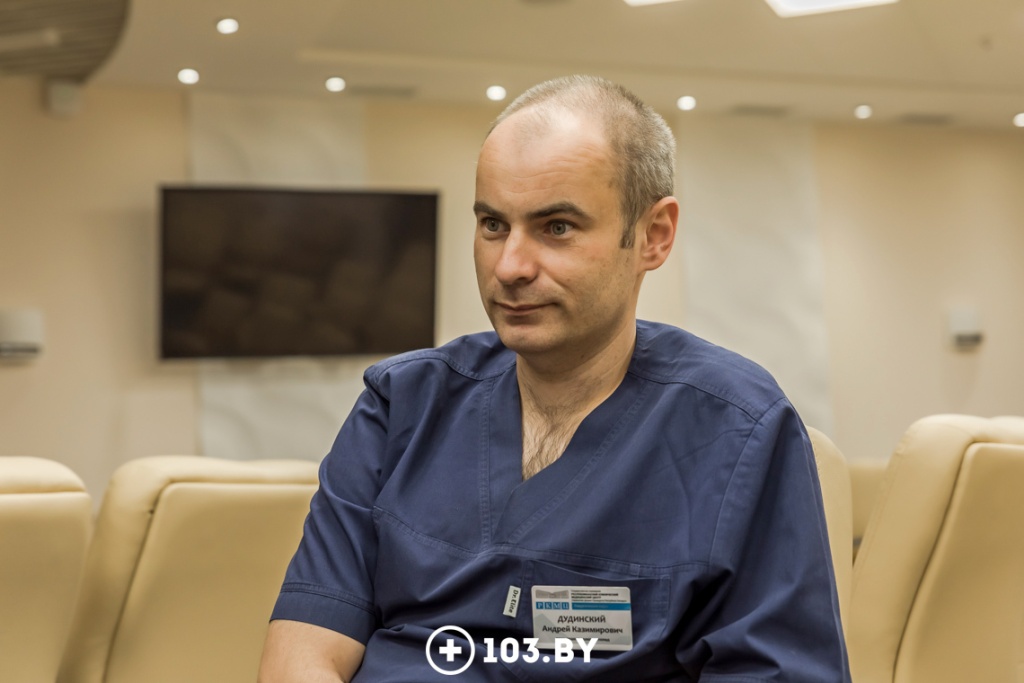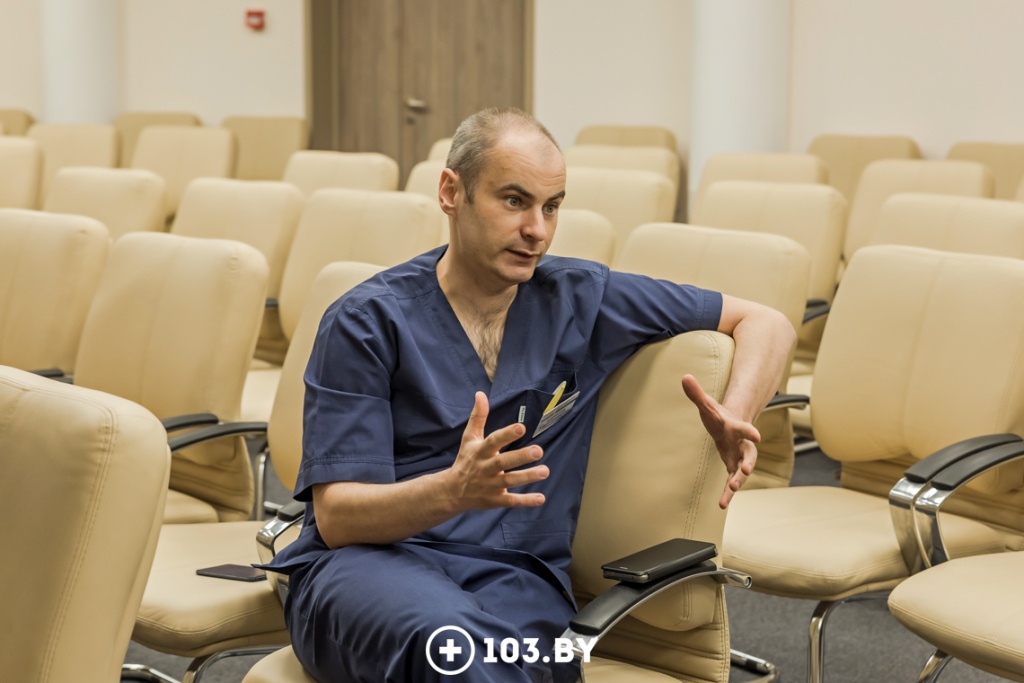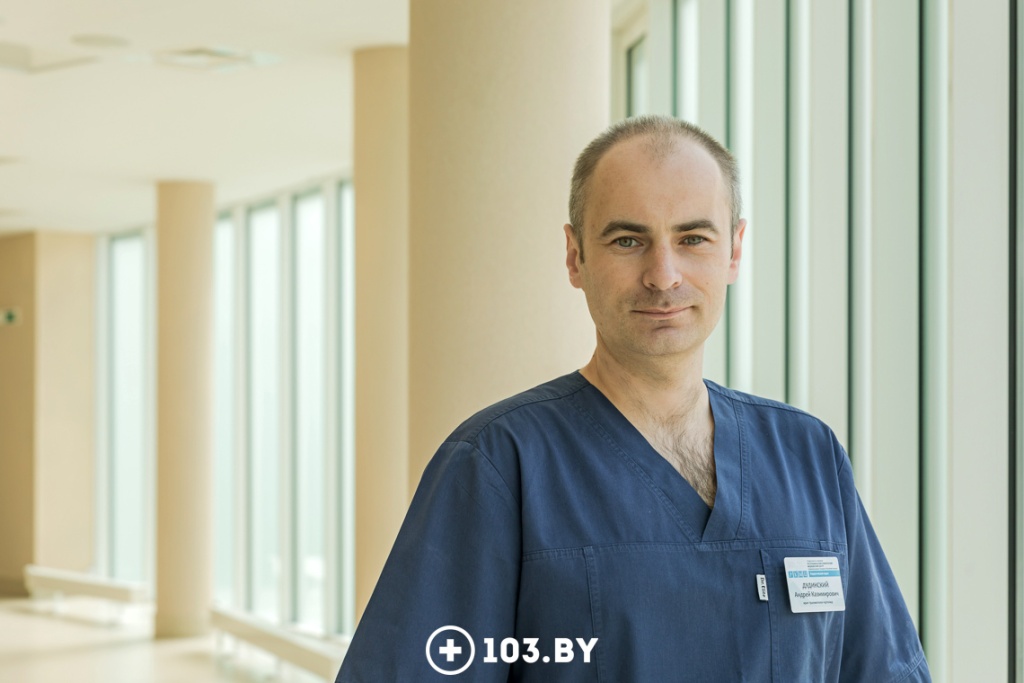
Arthroscopy is one of those modern techniques used when other diagnostic methods or conservative treatments fail to produce results or are mistaken.
A journalist from the 103.by portal interviewed Dr. Andrey Dudinsky, an orthopedic traumatologist from the Republican Clinical Medical Center, about the possibilities of knee arthroscopy.
1. What is arthroscopy?
— Arthroscopy is a modern method of diagnosing and treating joint disorders. The essence of this minimally invasive procedure is that the surgeon gains access to the knee joint through small surgical incisions, typically two, and inserts an arthroscope into the joint cavity.
An arthroscope is a device that allows visualizing the cell of the knee joint on a monitor screen, providing a magnified view of the articular surfaces of the tibia and femur, the inner and outer menisci, the cruciate ligaments, and the synovial membrane.
This method enables both accurate diagnosis and necessary manipulations to be performed on the knee joint.
Arthroscopy provides the most comprehensive visual representation of joint pathology compared to computed tomography (CT), magnetic resonance imaging (MRI), and ultrasound examination (US) of the knee joint.
2. How accurate is arthroscopy as a diagnostic method?
— Its accuracy approaches 100%. For comparison, the accuracy of magnetic resonance imaging (MRI) visualization is around 95% with highly qualified specialists.
In addition to the initial clearer image provided by the use of a high-resolution video camera, arthroscopy allows for the examination of knee joint structures with multiple magnifications during the operation. This enables a more accurate diagnosis.
If arthroscopy is used for diagnosis, the physician can:
- Examine the knee joint, including the articular surfaces of the femur and tibia, the ligament apparatus, menisci, posterior and anterior cruciate ligaments, and any foreign bodies present, as well as the synovial membrane;
- Take a sample of the synovial membrane for biopsy;
- Collect synovial fluid for analysis.

3. What therapeutic procedures does arthroscopy allow to perform?
— If the purpose of the intervention is treatment, not only a video camera but also manipulators are inserted into the area of the knee joint.
During such an operation, it is possible to suture a meniscus, remove a part of the meniscus, remove a foreign body from the knee joint, or perform ligament reconstruction of the knee joint..
In other words, in some cases, arthroscopy can cure the patient, while in others, it can at least solve the problem of chronic pain syndrome and establish a diagnosis.
4. Is this a painful procedure?
— Arthroscopy is performed under anesthesia: spinal or general..
If it's spinal anesthesia, the person doesn't feel the lower part of their body but remains fully conscious.
As for sensations, the patient may feel that some manipulations are being done in the knee joint, but they don't feel any pain.
If arthroscopy is done under general anesthesia, the patient falls asleep in the preoperative area and wakes up after the surgery. In other words, they don't feel any pain during the procedure.

5. What are the conditions for arthroscopy?
— You need to understand that any operation carries a certain risk, therefore, preoperative research methods are first prescribed: laboratory, ultrasound of the knee joint, MRI, CT. If these instrumental diagnostic methods show any changes, arthroscopy may be prescribed.
There are other cases: MRI does not reveal damage to the structures of the knee joint, but a person has a chronic pain syndrome. In such cases, arthroscopy is also performed - as a result, a meniscus rupture, cartilage damage, or some other pathology can be detected.
6. When is arthroscopy necessary?
— In some cases, this method literally saves the joint, for example, when there is a fragment (such as a piece of meniscus, chondral body, or foreign object) that traumatizes the joint during movement, causing faster wear and tear. Arthroscopy can be used to remove this fragment or perform meniscus resection, which hinders normal movement in the knee joint.
Another example is diagnostic arthroscopy, during which synovial fluid is taken for examination, often allowing the detection of an infection. This enables the patient to consult with other specialized professionals and receive effective treatment to alleviate inflammation in the knee joint. This helps prevent the development of severe knee osteoarthritis and potentially avoid future joint replacement surgery.

7. Who cannot undergo knee arthroscopy?
— Typically, there are no absolute contraindications to knee arthroscopy. However, this procedure should not be performed if:
- There are acute inflammations in the area where the surgical access is planned;
- There are blood clotting problems;
- The patient has a severe form of diabetes mellitus;
- There is severe cardiovascular pathology;
- There is respiratory insufficiency.
8. What is needed for a successful surgery?
— High-quality equipment, anesthetic support, and the experience of the surgeon performing the operation.

9. How does the recovery process go and how long does it take?
— It largely depends on what we see during the surgery. If it's a meniscal injury with impingement and a small resection, the patient can start walking on the operated leg and go home the next day.
As for the rehabilitation period, it can take up to 3-4 months after complex surgeries. After simpler procedures, the recovery period is relatively short, ranging from 3 to 6 weeks.
Interviewed by: Kristina Goloviychuk
Photo by: Elena Gordeychik



